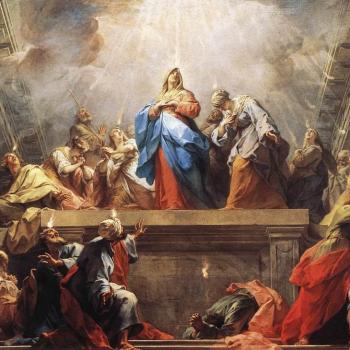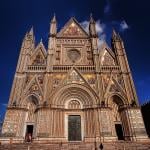The furtherance and further enrichment of the medieval Christian heritage of music and art remains of the greatest legacies of the Lutheran wing of the Protestant Reformation. As Luther stated in the preface to the 1524 Wittenberg Hymnal, he was “not of the opinion that the gospel should destroy and blight all the arts, as some of the pseudo-religious claim.” He would “like to see all the arts, especially music, used in the service of Him who gave and made them.”
Fifteen years ago, I attended a performance of Johann Sebastian Bach’s St. John Passion in Leipzig’s Thomaskirche (where Bach had served as cantor). This year, my interest in Bach’s passions was rekindled by a passage in Jaroslav Pelikan’s Illustrated Jesus through the Centuries. As Pelikan comments, it “was Bach’s genius to bring together, in the cantatas and then on a larger scale in the Passions, these two Reformation elements: the text of the Gospel in Luther’s unmatched translation and the chorale.” Archbishop Nathan Soederblom of Sweden once termed Bach’sSt. Matthew Passion “a fifth Gospel.”
The opening chorale of the Matthew passion is among the most stirring pieces of music I have ever heard. Enhanced by Bach’s use of two choirs, “Kommt, ihr Toechter, helft mir klagen” (Come, you daughters, help me lament) is haunting, eerie, and lovely. Here is Leonard Bernstein’s introduction:
Suddenly the chorus breaks into two antiphonal choruses. ‘See him!’ cries the first one. ‘Whom?’ asks the second. And the first answers: ‘The Bridegroom see. See Him!’ ‘How?’ ‘So like a Lamb.’ And then over and against all this questioning and answering and throbbing, the voices of a boy’s choir sing out the chorale tune, ‘O Lamb of God Most Holy,’ piercing through the worldly pain with the icy-clear truth of redemption. The contrapuntal combination of the three different choruses is thrilling. There is nothing like it in all music.
Whether for the love of great music or as a devotional aid during this holiest of Christian weeks, listen to and watch this performance of the opening chorale. It’s in the Thomaskirche, with the all-boy Thomanerkhor and two other Leipzig choirs:
Thanks be to God.












